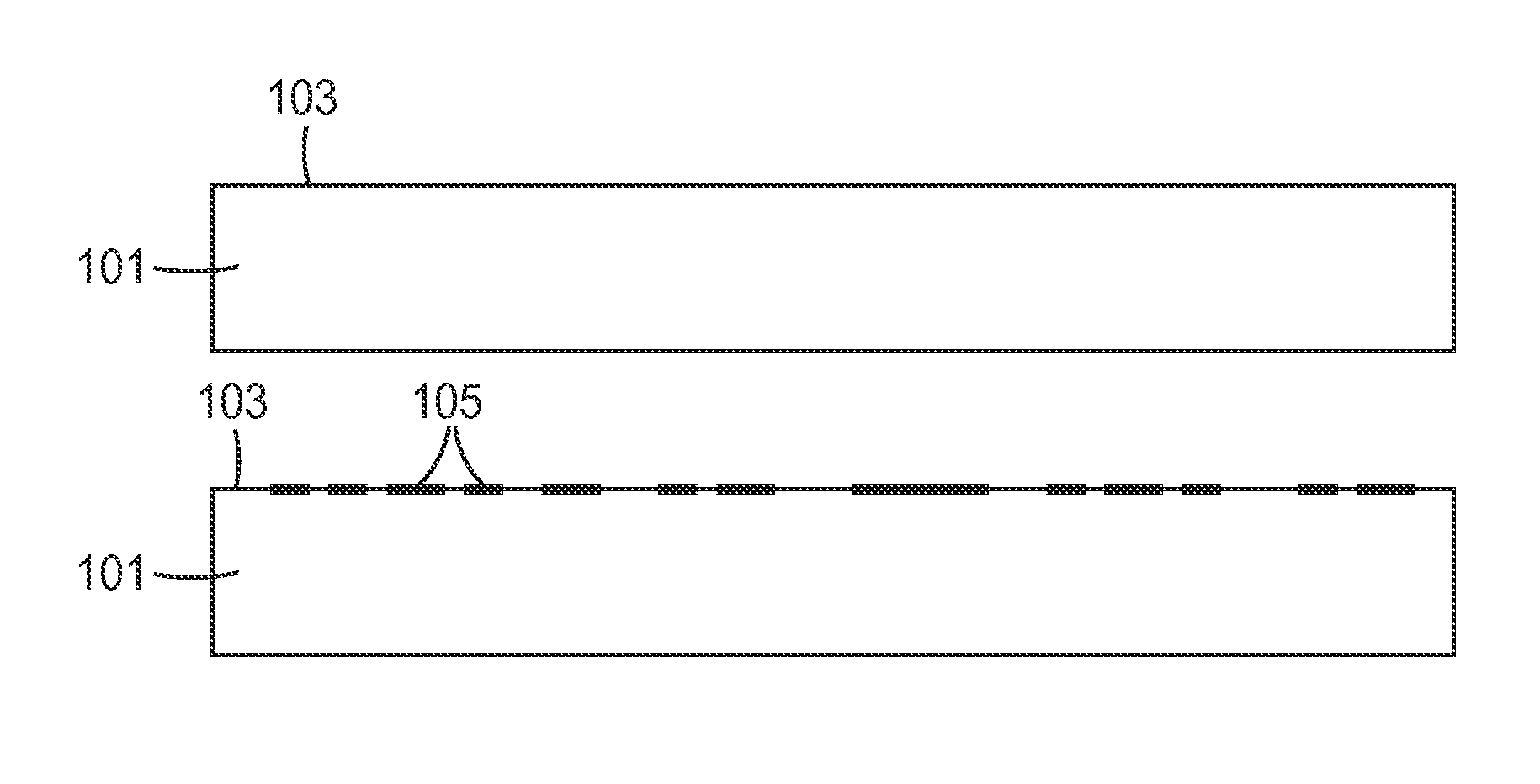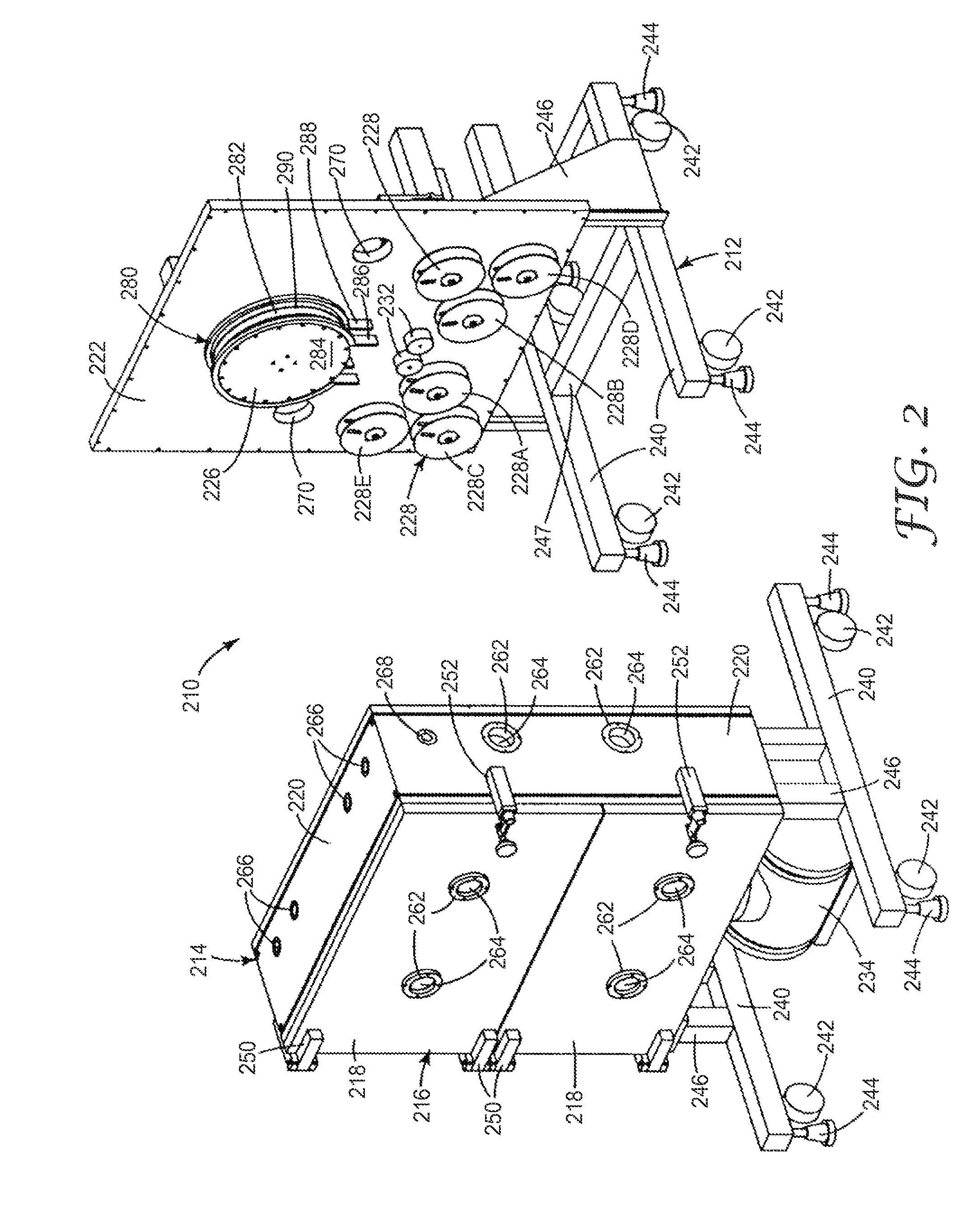Method of making a nanostructure
a nanostructure and nano-technology, applied in the field of nanostructure making, can solve the problems of limited commercial viability of the method, limited anti-reflective regions on the substrate, complicated batch process, etc., and achieve the effect of reducing reflectance and scratch resistan
- Summary
- Abstract
- Description
- Claims
- Application Information
AI Technical Summary
Benefits of technology
Problems solved by technology
Method used
Image
Examples
examples
[0072]The provided nanostructures and methods described herein were obtained by using a homebuilt plasma treatment system described in detail in U.S. Pat. No. 5,888,594 (David et al.) with some modifications and is illustrate in FIGS. 2, 3, and 4ab. The width of the drum electrode was increased to 14.5 inches (36.8 cm) and the separation between the two compartments within the plasma system was removed so that all the pumping was carried out by means of the turbo-molecular pump and thus operating at a much lower operating pressure than is conventionally done with plasma processing.
[0073]Rolls of polymeric film were mounted within the chamber, the film wrapped around the drum electrode and secured to the take up roll on the opposite side of the drum. The unwind and take-up tensions were maintained at 3 pounds (13.3 N). The chamber door was closed and the chamber pumped down to a base pressure of 5×10−4 torr. For the deposition of an discontinuous mask layer, tetramethylsilane gas at ...
examples 1-8
Nanostructure Formed on PMMA Substrate Film
[0077]PMMA film sheets were first exposed to a tetramethylsilane (TMS) plasma at a web speed of either 7.5 feet / min (2.3 m / min) or 8.5 feet / min (2.6 m / min) and the oxygen etching was carried out for four different, 30, 60, 90 and 120 seconds. The resulting sheet articles demonstrated outstanding average % transmission and anti-reflection (average % reflection) properties as summarized in Table 1 below:
[0078]
TABLE 1Optical Properties of Nanostructured PMMA films (Examples 1-8)% RTMS / ARRIEExam-% R (without(tapedepositionEtchingpletape correct)correct)% T% H(m / min)Time12.431.8596.12.382.612021.330.7697.11.362.69031.360.7897.20.742.66042.441.8796.30.482.63051.130.5696.52.152.312060.980.4196.71.622.39071.220.6497.30.742.36084.323.7595.80.592.330
The optical reflectance spectra of these films are summarized in FIG. 5, where the broad-band anti-reflection performance is displayed.
[0079]The surface morphology of the PMMA films of was determined by S...
PUM
| Property | Measurement | Unit |
|---|---|---|
| Nanoscale particle size | aaaaa | aaaaa |
| Nanoscale particle size | aaaaa | aaaaa |
| Nanoscale particle size | aaaaa | aaaaa |
Abstract
Description
Claims
Application Information
 Login to View More
Login to View More - R&D
- Intellectual Property
- Life Sciences
- Materials
- Tech Scout
- Unparalleled Data Quality
- Higher Quality Content
- 60% Fewer Hallucinations
Browse by: Latest US Patents, China's latest patents, Technical Efficacy Thesaurus, Application Domain, Technology Topic, Popular Technical Reports.
© 2025 PatSnap. All rights reserved.Legal|Privacy policy|Modern Slavery Act Transparency Statement|Sitemap|About US| Contact US: help@patsnap.com



